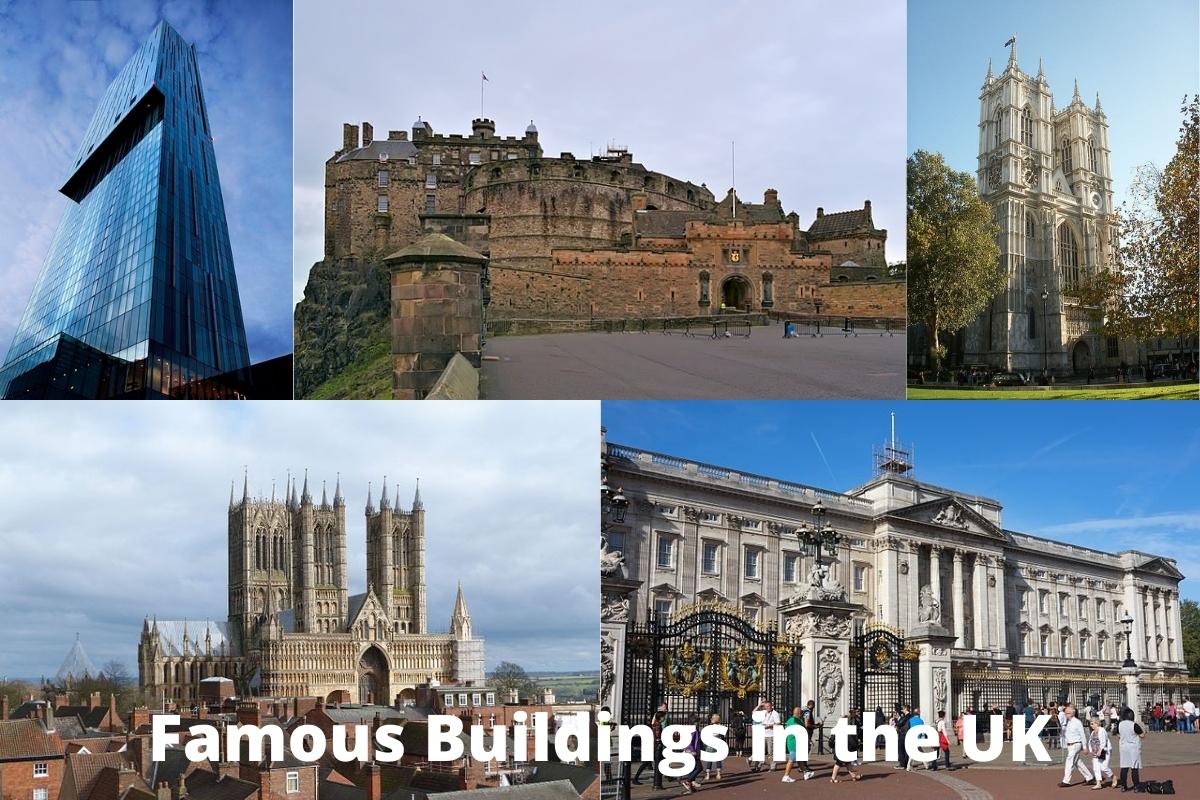From Buckingham Palace, which is known globally as the Queen’s home, and the core of national and sovereign festivities like the Platinum Jubilee, to the most famous clock in the world, Big Ben, the UK has some incredible structures.
Millions of tourists flock here annually and touring many of the breathtaking Georgian and Victorian buildings usually top the to-do list.
Here’s a list of the most famous buildings in the United Kingdom.
Famous Buildings in the UK
1. Buckingham Palace
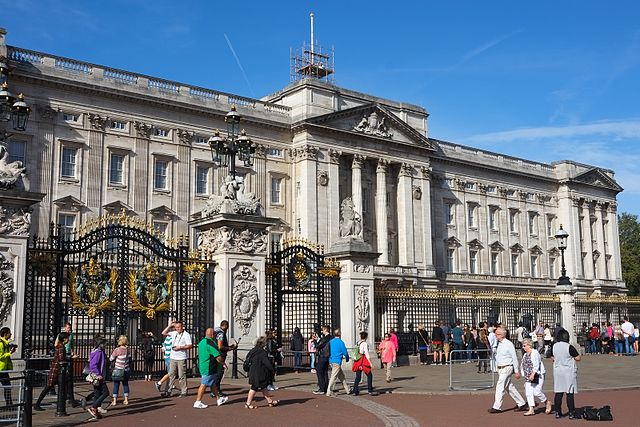
It’s not just the Queen’s residence or the background to the typical Changing the Guard ritual.
Annually, the staterooms are accessible to the general populace from most of August to September, plus some winter and spring days for formal and royal festivities.
It has served as the central focus for both national celebrations and national tragedies in Britain.
The heart of the current palace was a magnificent townhouse named Buckingham House that was constructed for the Duke of Buckingham in 1703 on land that had been in private possession for at least 150 years before that.
Also Read: Famous Palaces
In 1761, King George III had the property renamed The Queen’s House after he had purchased it as a home for Queen Charlotte.
It was expanded in the nineteenth century, mostly by designers John Nash and Edward Blore, who added three wings around a courtyard. In 1837, upon Queen Victoria’s ascension, the British monarchy made its London headquarters a palace known as Buckingham Palace.
Also Read: British Stately Homes
The palace chapel was demolished by a German missile during WWII, and in its place, the Queen’s Gallery, which displays pieces from the Royal Collection, was made available to the public in 1962.
Sir Charles Long recommended the use of pink and blue lapis and vividly colored scagliola in the initial early 19th century home décor, many of which have survived to the present day. The palace’s gardens remain the largest private landscape in London, and it includes 775 rooms.
2. St. Paul’s Cathedral
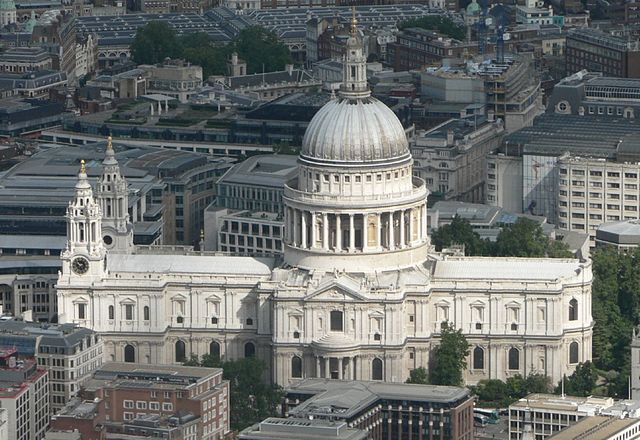
The cathedral is instantly recognizable as being among London’s most iconic landmarks. The royal family has held weddings, burials, and jubilee festivities there. For nearly three hundred years, its dome has topped the skyline in the City of London, framed by the spires of Wren’s cathedrals.
From 1710 until 1963, this 111-meter-tall edifice stood as London’s tallest structure. Despite its age, the dome continues to rank among the tallest in the world. After Liverpool Cathedral, St. Paul’s is the biggest church edifice in the U.k. in terms of square footage.
Also Read: Famous Buildings in London
The Anglican Bishop of London resides at St. Paul’s Cathedral, a landmark in London. The Diocese of London considers the cathedral to be its “mother church.”
It’s a Grade I historical landmark that can be found on top of Ludgate Hill in London’s financial district. Even the first church that stood here in AD 604 dedicated itself to the Apostle Paul.
Since its construction in the late 17th century, this building has been admired for its exquisite example of English Baroque architecture by Sir Christopher Wren. During his lifetime, Wren oversaw its completion as part of London’s massive post-Great Fire reconstruction effort.
3. Royal Pavilion
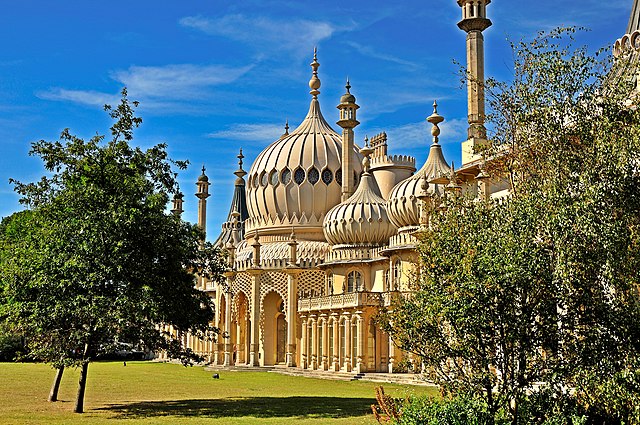
In the heart of Brighton is a magnificent palace known as the Royal Pavilion, which has a rich and eventful past. This historic home, constructed as a coastal leisure palace for King George IV, combines Regency splendor with the visual design of Chinese and Indian architecture
In the middle of the 1780s, George, Prince of Wales, leased a modest inn in Brighton, England, with a view of the city’s chic seaside boardwalk. As it became closer to London, the once-thriving fishing village of Brighton began its transformation into a posh beach resort.
With his gambling and philandering debts paid off, George commissioned the services of designer Henry Holland to remodel his Brighton house into a humble residence, which eventually earned the name Marine Pavilion.
George, an art enthusiast with a penchant for the exotic, decorated his beach house with opulence. He went out of his way to select hand-painted Chinese wallpapers plus ship furnishings from China.
In 1808, a brand-new stable complex was finished, including a stunning glass-domed and lead roof and enough stalls for sixty-two horses. George was inaugurated as Prince Regent in 1811 after his father, King George III, was declared mentally incapacitated.
In those days, George’s habit of hosting huge social gatherings and entertaining guests left the Marine Pavilion feeling too cramped. After commissioning John Nash to start the restoration in 1815, George’s modest cottage was transformed into the spectacular Oriental palace it is today.
4. Westminster Abbey
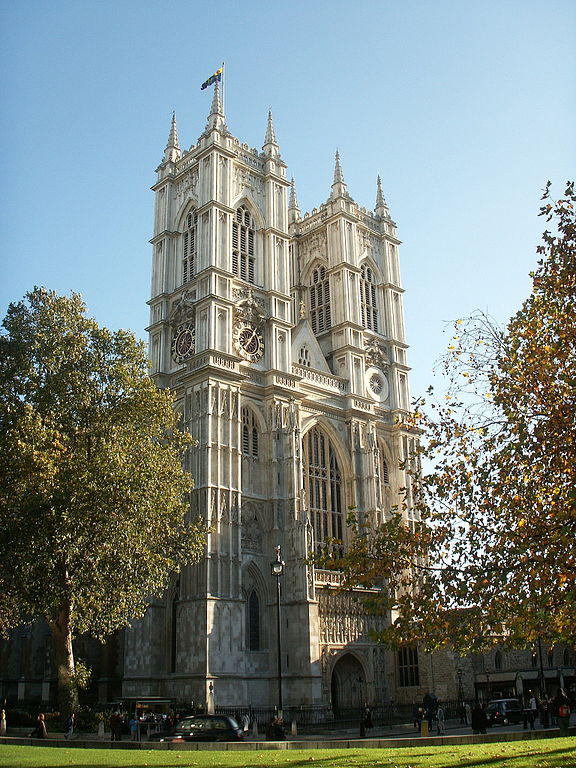
Also known as the Collegiate Church of Saint Peter at Westminster, it is among the most recognizable churches in the country and the customary site of the crowning of British monarchs.
The site also contains the tombs of over 3-300 individuals, including English and later British rulers. From 1100, the Abbey has played host to sixteen royal weddings.
A church was established there in the 7th century under the reign of Bishop Mellitus, based on a story first recorded by Sulcard regarding the year 1080. With orders from King Henry III, work on the current church started in 1245.
Before its dissolution in 1539, the church was a portion of a Catholic Benedictine abbey. Up to 1550, it was the spiritual center of the Westminster Diocese; from 1550 to 1556, it was one of two cathedrals serving the London area.
5. The Shard
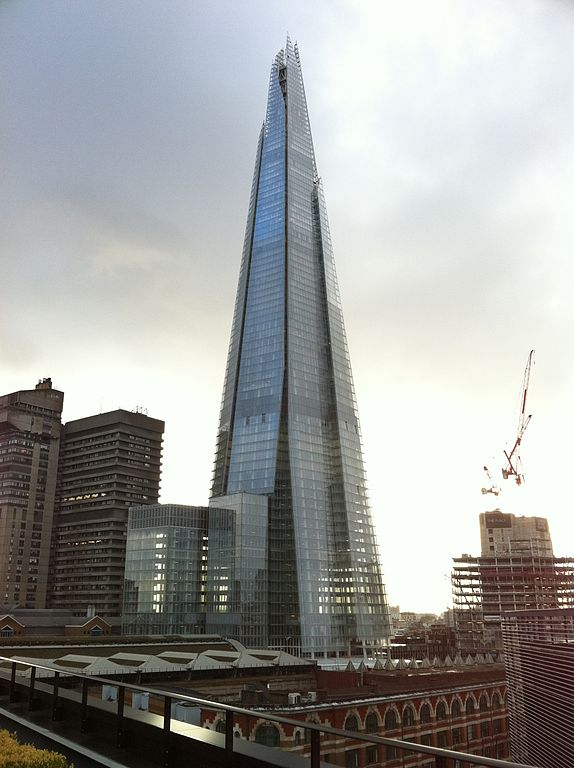
The Shard is a 72-story skyscraper in Southwark, London. It’s a part of The Shard Quarter and was designed by Italian architect Renzo Piano. It is also known as the old London Bridge Tower, Shard London Bridge, and the Shard of Glass, and the.
The Shard is the tallest skyscraper in the UK at 309.6 meters (1,016 ft), as well as the seventh-tallest structure in all of Europe. It took the place of Southwark Towers, a 24-story office complex that had been there since 1975.
Construction of The Shard began in March 2009 and was completed on March 30, 2012, with an opening ceremony held on July 5, 2012.
In November 2012, we reached practical completion. In 2013, on February 1st, the public was granted access to The View from The Shard, a privately run observation deck atop the tower.
At a height of 244 meters, the glass-enclosed pyramidal tower features 72 livable floors and an open-air observation deck on the 72nd floor (801 ft).
6. Edinburgh Castle
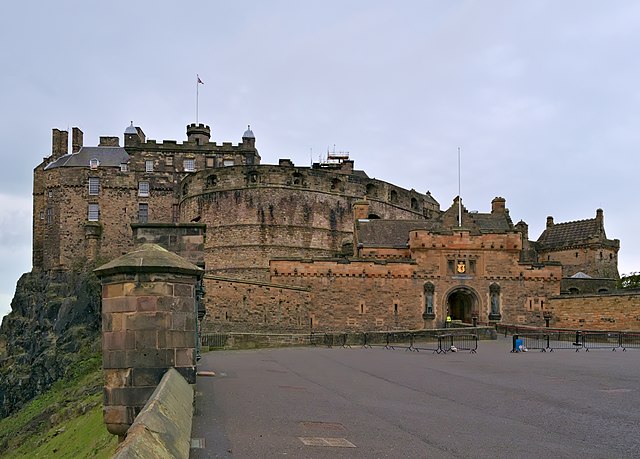
Located in Edinburgh, Scotland, the castle of Edinburgh has a long and storied history. It is located on Castle Rock, a site that has been settled on since at least the Iron Age, though the precise origins of the first community there are unknown.
From at least the time of King David I throughout the twelfth century, a royal fortress stood atop the rock, and its use as a royal palace lasted up until 1633.
Also Read: Famous Castles in Europe
The castle’s housing importance waned beginning in the 15th century, and until the 17th century, it served mostly as an armed service barracks for a huge garrison.
Since the early 19th century, when its significance as a piece of Scotland’s national history began to be recognized, several restoration programs have been implemented.
Also Read: Landmarks in Scotland
According to studies conducted in 2014, it has been “the most embattled site in England and among the most targeted in the world” over its 1100-year existence, with a total of 26 sieges.
Many of the medieval defenses were blasted by artillery fire during the Lang Siege during the 16th century, and very few of the extant buildings are older than that period.
7. Caernarfon Castle
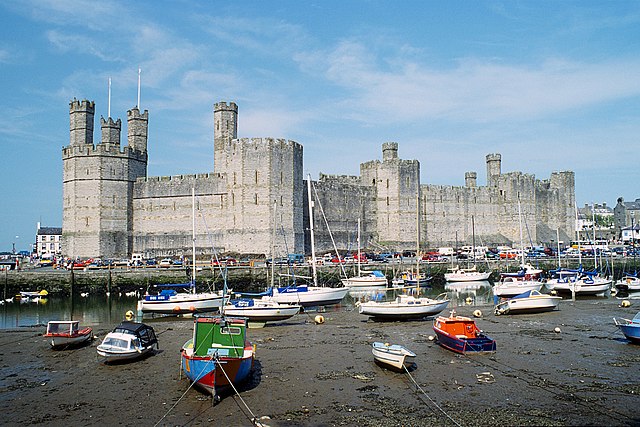
Caernarfon Castle is widely regarded as one of the finest medieval fortresses in existence today. Together with Edward I’s other castles in Conwy, Beaumaris, as well as Harlech, this fortress palace sits on the riverbanks of the Seiont.
If you want to see architectural drama and grand size, though, Caernarfon is your only option. During Edward’s reign, Master James of St. George, a military architect, and the king collaborated to build the fortress, city walls, and harbor at this location.
It needed 47 years as well as a whopping £25,000 to complete this massive construction job. Battles with Welsh princes led to the construction of the castle.
The massive curtain walls and intimidating King’s Gate were built to survive an attack. However, the eagle sculptures, multicolored bricks, and polygonal towers all communicated a deeper meaning.
These were reminiscent of the imperial Roman architecture seen on the Constantinople walls. They also mention the Welsh legend of Macsen Wledig, who had a vision of a huge fort at the river’s mouth as “the prettiest that man ever beheld.”
This means that Caernarfon is the castle of your imagination. An immortalized myth. It’s the only Welsh castle that, after 700 years, still manages to capture the imagination.
8. Beetham Tower
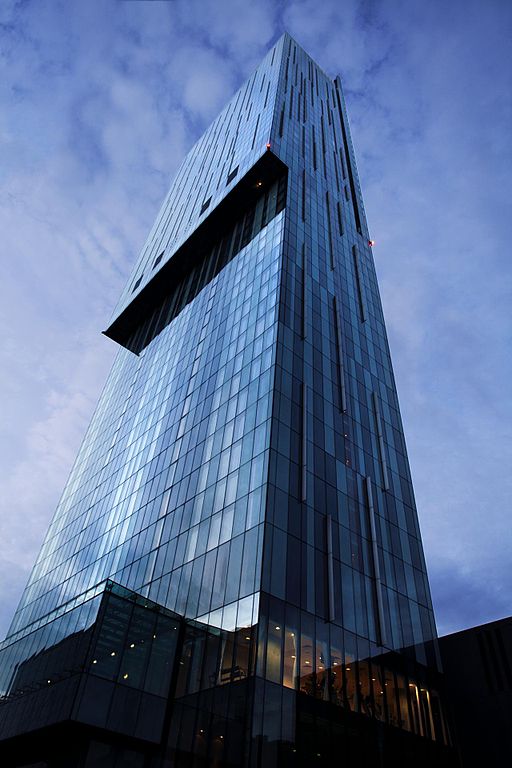
In Manchester, England, there is a 47-story skyscraper called Beetham Tower (also called the Hilton Tower). It was finished in 2006 and was developed by SimpsonHaugh and Partners; it was given its current name in honor of the Beetham Organisation, the building’s original owners.
An elongated layout was necessary since the development sits on a narrow plot of land towards the top of Deansgate; it was first suggested in July 2003, and work began the following year.
The Financial Times called it “the UK’s first true skyscraper outside London” due to its height of 554 feet (169 meters). The structure was the tallest tower in Manchester as well as the second-tallest structure in the United Kingdom after London until 2018.
However, the South Tower in Deansgate Square, which stands at 659 feet (201 m), eclipsed it in height in November of 2018.
The tower is seen in ten different counties in England, and its unusually lengthy floor design is the main reason for this.
Also Read: Famous Buildings in England
Views of Greater Manchester, the Cheshire Plain, Snowdonia, and the Pennines you can see from the penthouse.
In windy conditions, the tower is known to make a loud accidental hum or howl that is thought to come from the glass ‘blade’ at the top of the building.
9. Lincoln Cathedral
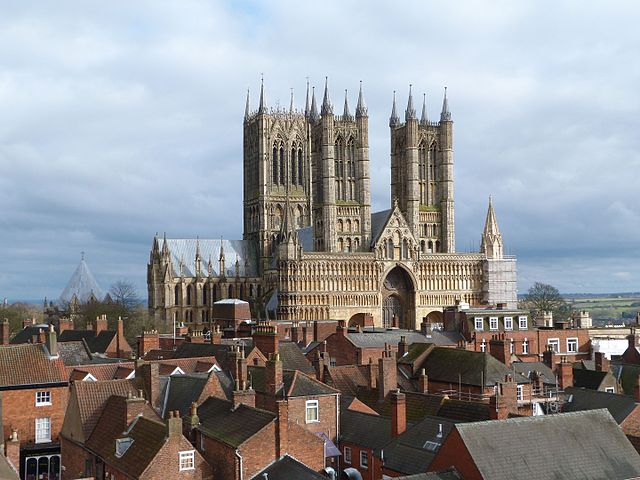
In Lincoln, England, stands Lincoln Cathedral, also known as Lincoln Minster, the Cathedral Church of the Blessed Virgin Mary of Lincoln, and on rare occasions St. Mary’s Cathedral. The building process kicked off in 1072 and proceeded in stages all through the high medieval period.
The cathedral was constructed in the Early Gothic style, as were many English churches of the Middle Ages.
In 1311, once the 160m high central spire was completed, several historians asserted it became the tallest structure globally. The cathedral held the title for 238 years until its spire fell off in 1548 and wasn’t restored.
The genuine Magna Carta, which was kept in the cathedral for hundreds of years, is now safely on exhibit in Lincoln Castle.
At over 5,000 square meters (54,000 square feet), the cathedral is the fourth largest in the UK, behind Liverpool, St. Paul’s, and York Minster. Scholars of architecture hold it in the highest regard.
10. Big Ben

The remarkable clock at the northern end of London’s Palace of Westminster is known as Big Ben, a term originally given to the Great Bell of the clock.
The Clock Tower, where Big Ben is housed, has been re-titled the Elizabeth Tower in honor of Queen Elizabeth II’s Diamond Jubilee in 2012.
Augustus Pugin, a neo-Gothic architect, was responsible for the design of the tower. After its completion in 1859, the clock was recognized as the world’s biggest and most precise four-faced striking, as well as a chiming clock. The tower’s height is 316 feet (96 m), and there are 334 stairs leading up to the bell room.
The tower’s a globally recognized symbol of British culture. As one of the most recognizable symbols of Britain and the parliamentary system, it frequently appears in opening shots of movies set in London.
Since 1970, the clock tower has been included in a Grade I structure, and since 1987, it has been a part of a UNESCO World Heritage Site. The clock underwent renovation between 2017 and 2022.

